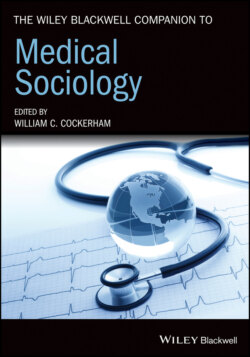Читать книгу The Wiley Blackwell Companion to Medical Sociology - Группа авторов - Страница 20
KEY CONTRIBUTIONS
ОглавлениеIn summary, medical sociology contributes to sociology and other health sciences by examining (1) the social causes of health-related outcomes and behaviors (Social Epidemiology), (2) the social psychological processes that mediate and moderate the social causes and social consequences of health (Social Psychology of Health and Illness), (3) issues linked with health care delivery and health care experiences, medical knowledge, and health social movements, including social inequality, social institutions, and health policy/law (Sociology of Medicine), and (4) problems within institutions of medicine, including medical treatment, health professions, and the marketing of health care (Sociology in Medicine). By distilling our major subfields and key contributions through an efficient and representative structure, we are able to see that medical sociology makes the broader study of sociology more meaningful by establishing explicit links between important sociological concepts (e.g. social structure, social institutions, and culture) and health, health care, and human suffering. Mirowsky and Ross (2003:3) note, for example, that few people would care about social inequality “if the poor, powerless, and despised were as happy and fulfilled as the wealthy, powerful, and admired.” We are also able to discern the primacy of social arrangements and social processes in the study of health and medicine, which is medical sociology’s unique contribution to the health sciences. Specifically, we describe patterns of health and health-related behaviors with greater attention to the complexities of social arrangements than one often sees in fields like public health. We offer unique and compelling analyses of the material and subjective conditions that explain the broader social distributions of health than fields like health psychology and health economics. We contribute more critical analyses of health care systems than medicine. Our discussion of major subfields also suggests a number of ways in which we might further develop as a field.
